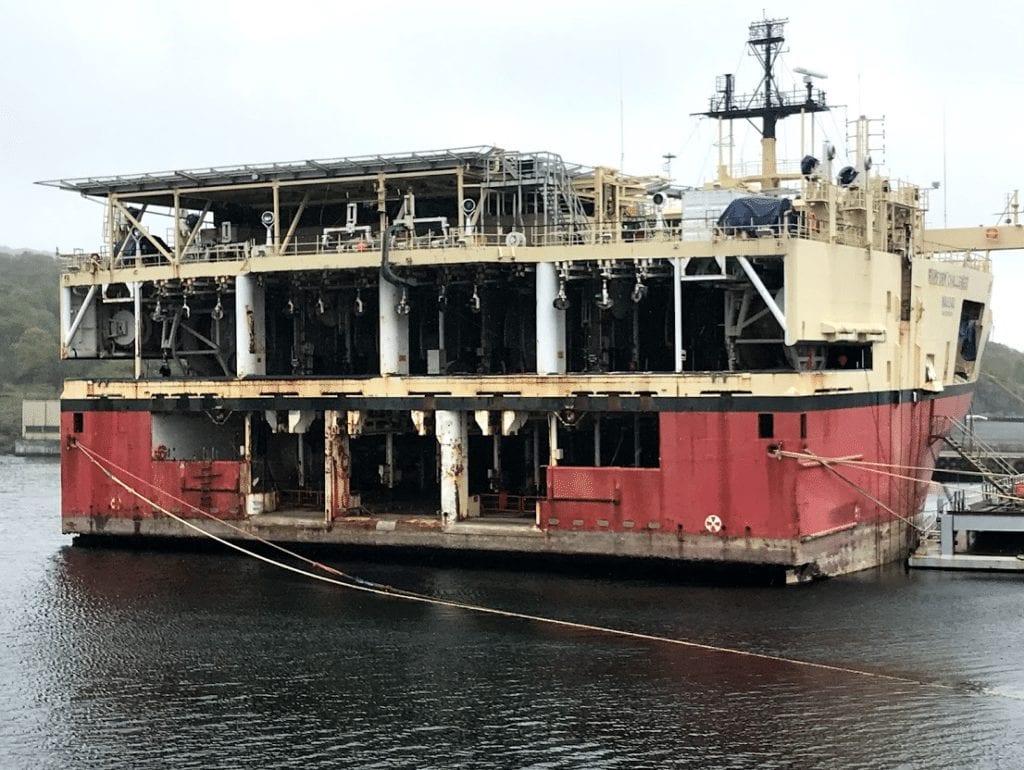A nuclear-powered icebreaker is pushing the Suez and Panama Canals closer to the history books.
In a warmer world, the Northeast Passage can be the main shipping route between East and West. A tenth of Russian investments are in the Arctic region, including icebreakers.
I have always been fascinated by frozen water. I remember when we as children threw stones out on the ice and heard the nice, clunky sound when the stone thumped and slid out.
On ice skates down the river where I lived back in the 80’s, we saw fish and reeds through the clear ice that drifted down the stream. Then we went through the ice. Not deep, but very cold. Our skates, laces, socks and toes froze to ice.
And I have a childish fascination for icebreakers.
Russian icebreaker
The fact that the Northeast Passage is becoming ice-free is bad news. Can not quite rejoice that it will shorten the waterway between East and West and thus reduce CO2 emissions from shipping. With its 940 million tonnes of greenhouse gas emissions (2.5% of the total), it will help somewhat that the travel distance will be between 4,500 and 8,000 kilometers shorter compared to the Panama and Suez Canals.
This route also takes 10-15 days less. The danger, on the other hand, is that oil spills, which statistically will occur at some point, do much greater damage here because oil decomposes more slowly at low temperatures. In addition, it can remain under the ice and be virtually impossible to get up.

Also read: Can these vessels go without CO2 emissions?
Leader
The Russian nuclear icebreaker Leader (cover photo) will be ready in six years. It will then be the world’s largest icebreaker. Leader can break 4 meters thick ice and keep 12 knots speed if the ice is 2 meters. The crew of 127 will be able to have enough supplies for 8 months. Warmer climates and less ice will allow the route to stay open all year round.
Keeping the waters open all year round is also something the Russian military forces are happy with. This will make it easier to move military personnel and equipment faster.
The icebreaker Ivan Papanin, which was launched in October last year, demonstrates this point. It’s a hybrid between an icebreaker and a warship.
When iPhones, Play Station consoles, teddy bears, exercise machines, t-shirts, dresses and jewellery go by boat from East to West, it will be under Russian supervision.
Since 2013, Russia has invested billions of dollars in building and upgrading seven military bases along the Northeast Passage with advanced radar and missile systems.
Sea route rulers
Disputes and control over roads have always been a source of war and conflict. Back in the day England and France were not exactly humane when they realised that Egypt wanted control of the Suez Canal.
The construction of the Panama Canal claimed thousands of lives. And the Dutch herring fleet was attacked in the 16th century because herring gave the Netherlands economic strength to build ships and secure its colonies in the East.
The Dutchman Willem Barentz was the first to test the Northeast Passage in 1594. At that time, it was the battle against the Portuguese monopoly on the Asian trade that was at stake. Bartentz and the subsequent attempts failed. They had no icebreaker. The Dutch ended up whaling around Svalbard instead.
When iPhones, Play Station consoles, teddy bears, exercise machines, t-shirts, dresses and jewellery go by boat from east to west, it will be under Russian supervision.
And then, as I said, a solid icebreaker is needed that can keep business open. That is, at least as long as the ice there.
America’s old icebreaker is lagging behind
The U.S. Coast Guard is lagging behind. For now, they have to settle for the icebreaker Polar Star from the 70s (picture below).
And where the United States and Canada have put oil exploration in the Arctic on ice, Russia is gearing up. New ports, airports, hundreds of kilometers of oil pipelines and new cities will emerge according to the plans. The state energy companies Gazprom, Lukoil and Rosneft will be given a real boost. This is the first step in a larger plan to establish the Northeastern passage in the Russian economic zone.
Energy companies will receive tax incentives for oil and gas extraction, including a reduced tax of five percent in the first fifteen years. We are talking about 37 billion barrels of oil.
In the Eastern Arctic near Canada’s Beaufort Sea, they get extra good conditions; zero production tax for the first twelve years. According to Russia’s Minister for the Far East and the Arctic, Alexander Kozlov, three major offshore projects have already been decided.
China
The Chinese also see benefits from the ice melting; faster way to Western markets and access to energy. Gas is being drilled in Lake Kara on the North coast of Russia. For the past five years, Chinese cargo ships have defied the ice floes in what they refer to as the “Polar Silk Road”.
In Shanghai they recently built the icebreaker Snow Dragon 2. And Russian-Chinese partnership suits both countries well in a time where relations with the United States are not particularly good.
China is also investing heavily in the countries around the Arctic. A free trade agreement with Iceland for fish. Joint research centre with Russia which, among other things, will study the ice conditions and the construction of a deep-water port in Arkhangelsk is proposed by a Chinese state-owned company. Chinese companies have also wanted to invest in upgrading airports in Greenland and a port in Sweden. China also has plans to strengthen the submarine fleet to protect its interests.
The cover photo is grabbed from Naval News. Rosatom picture.


